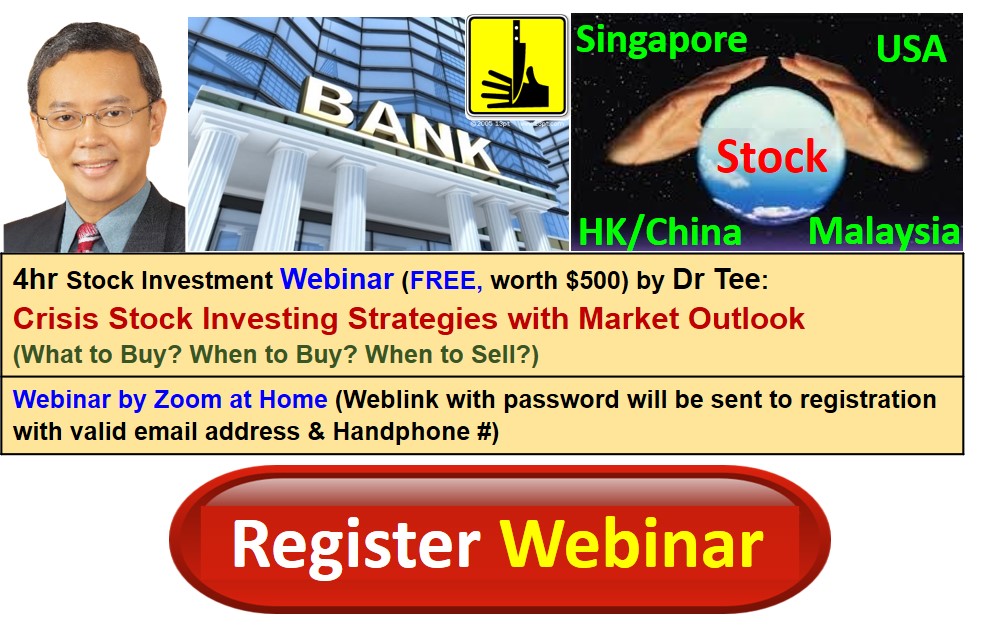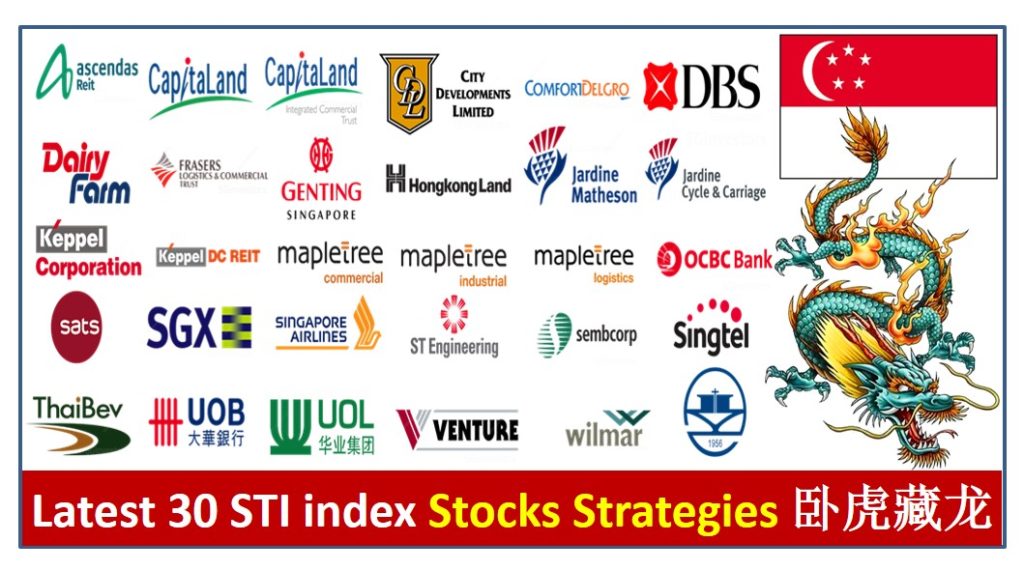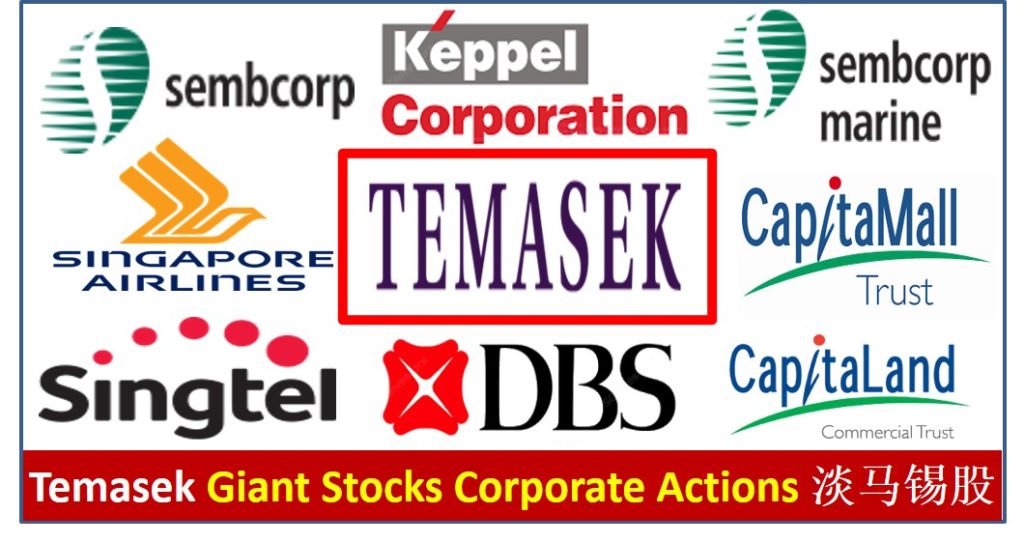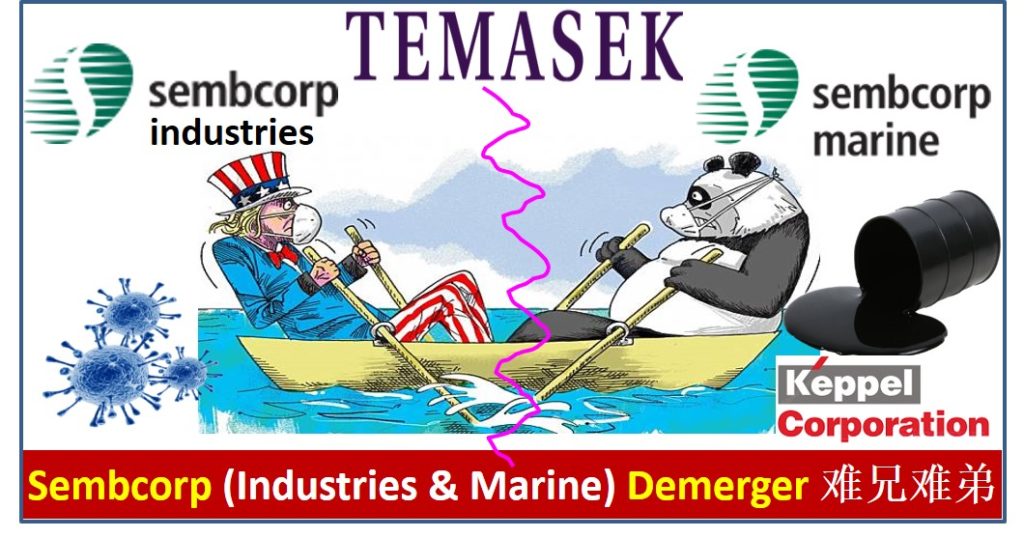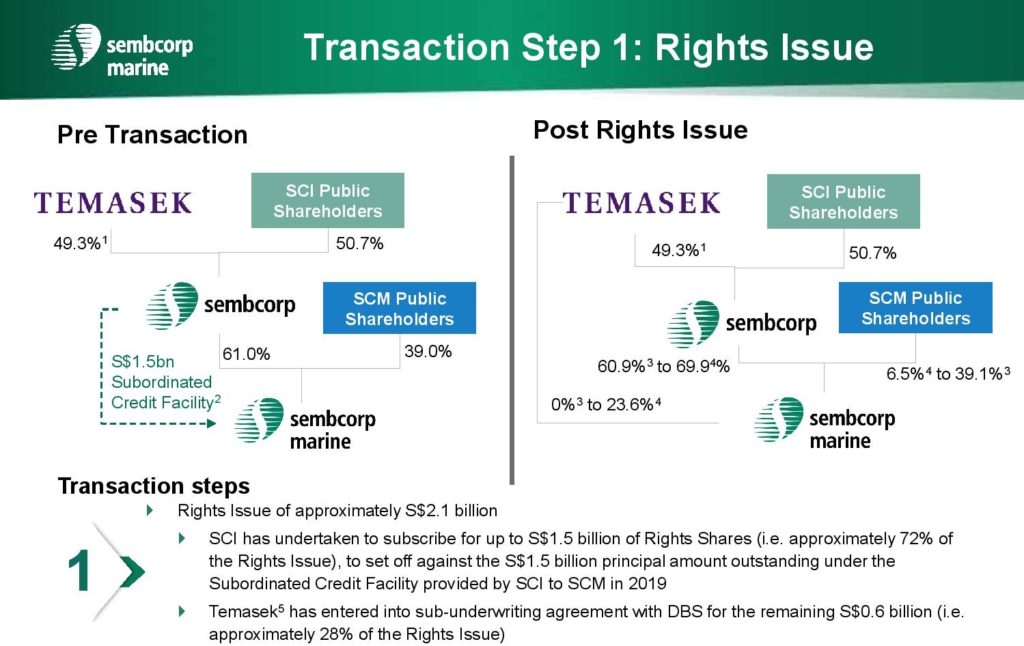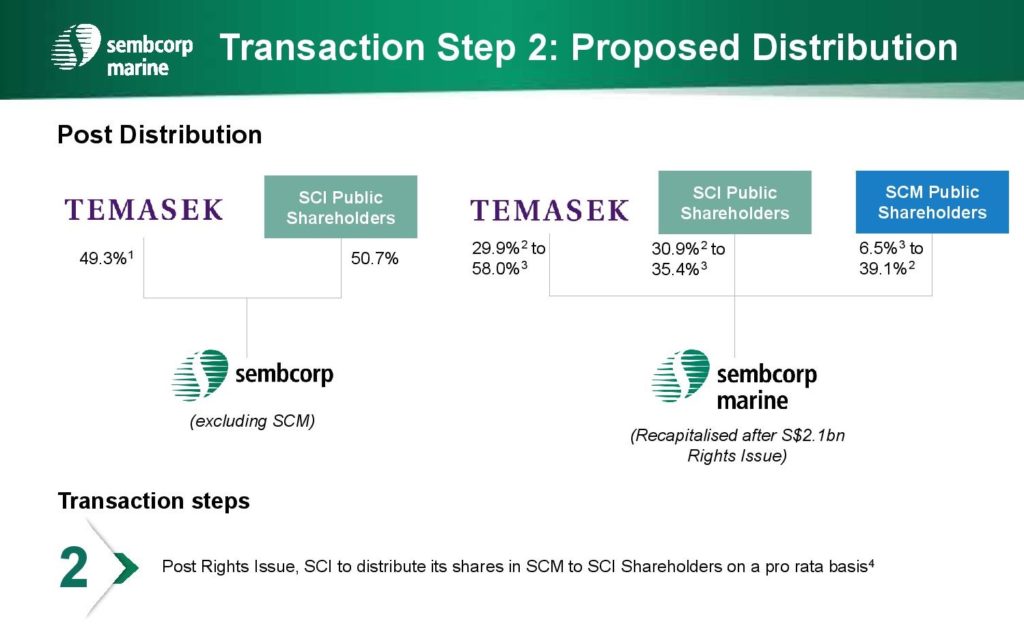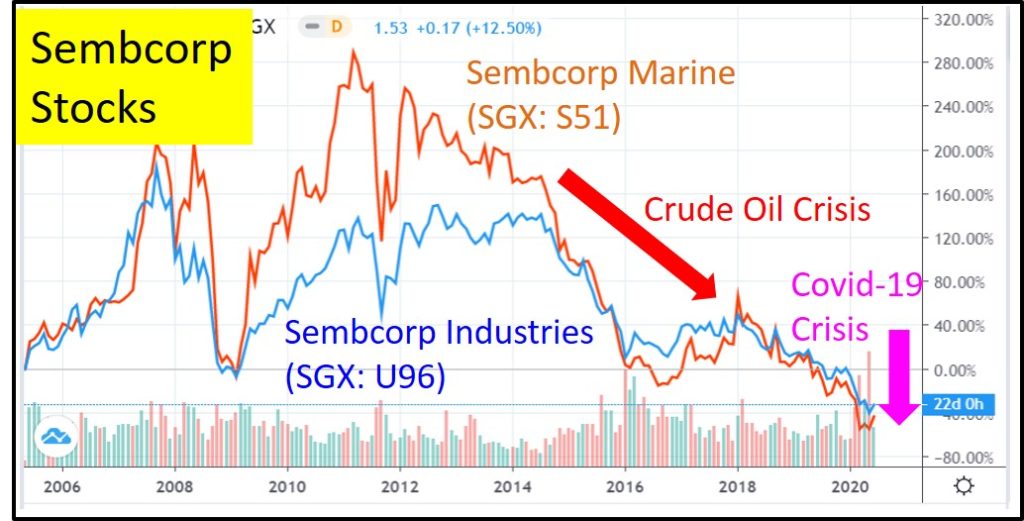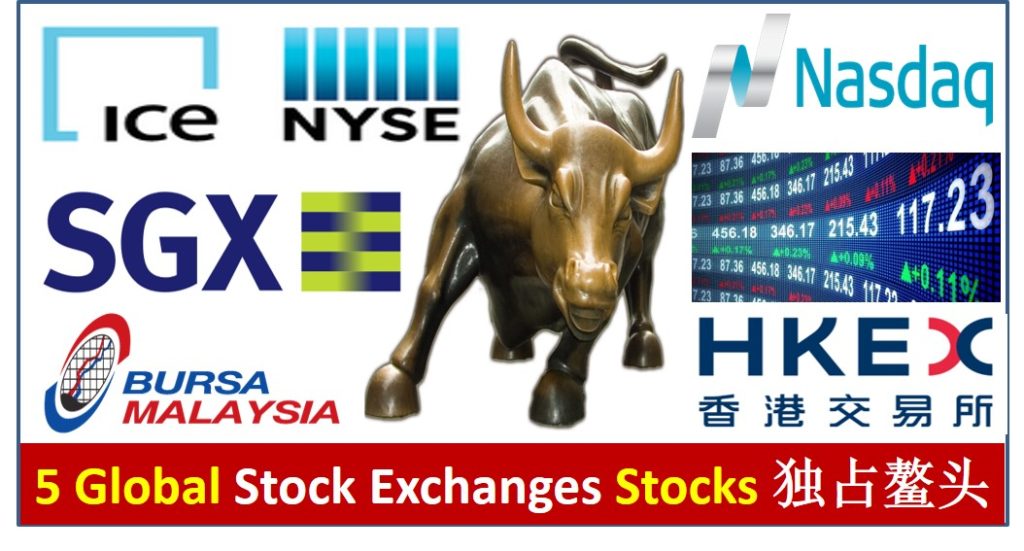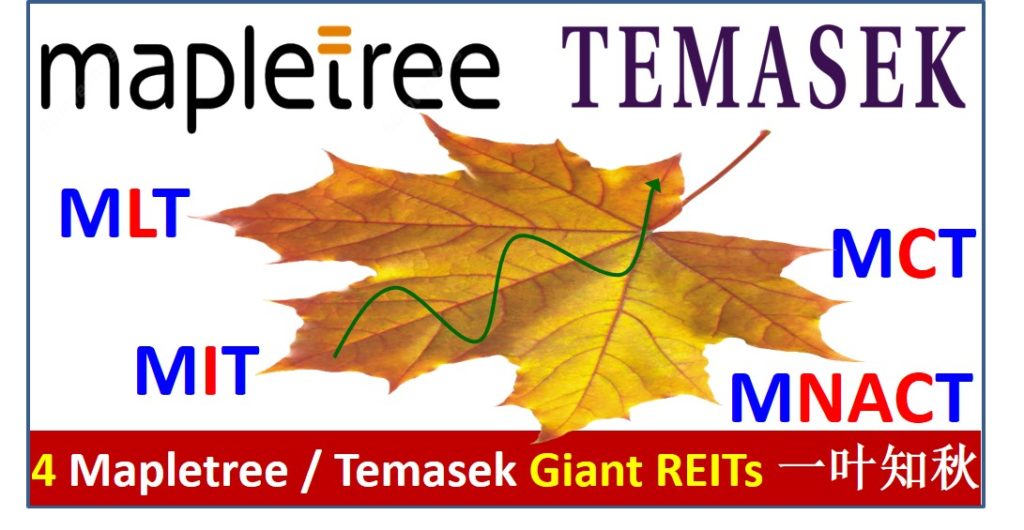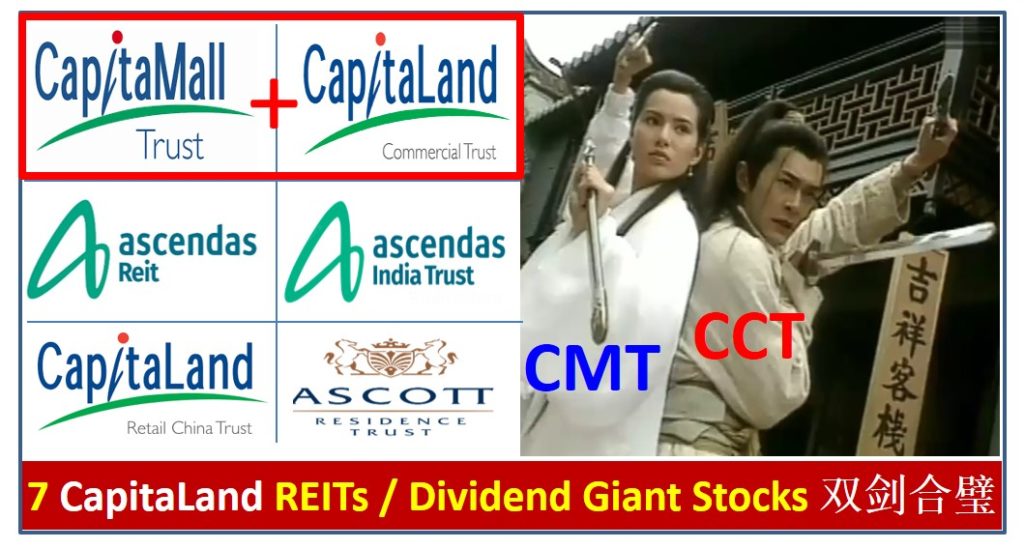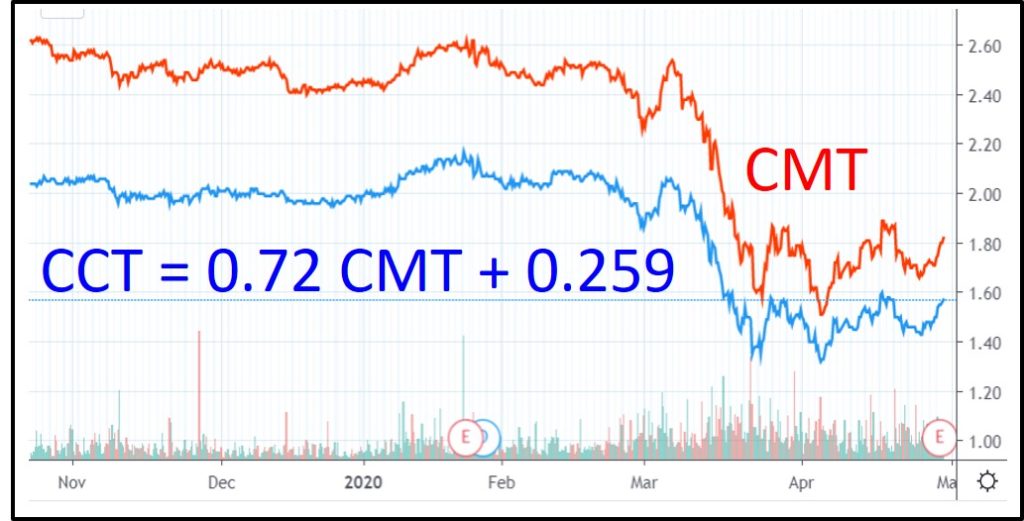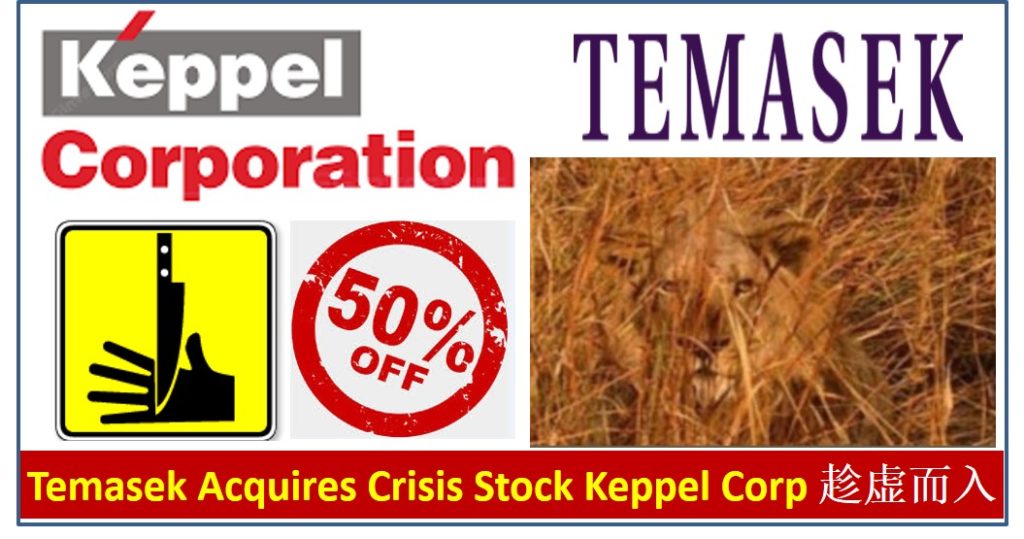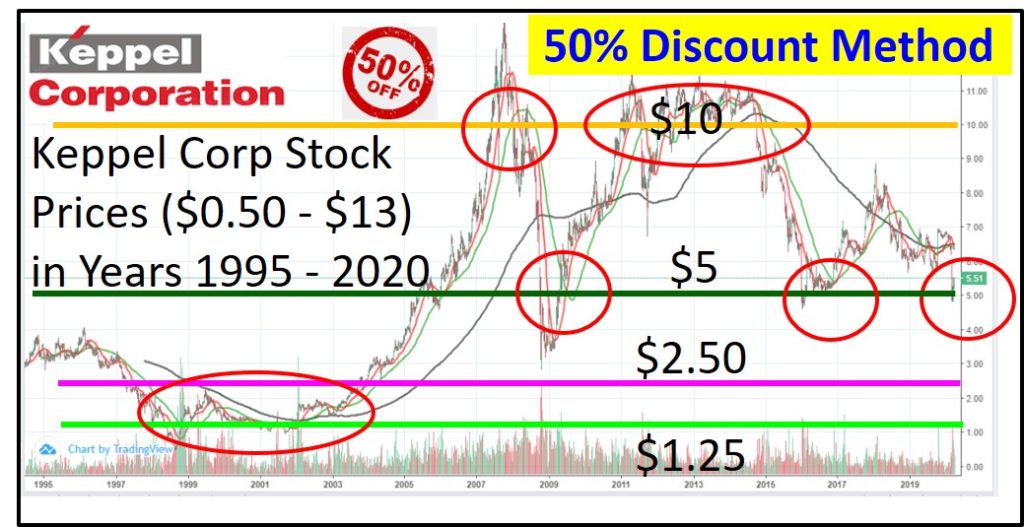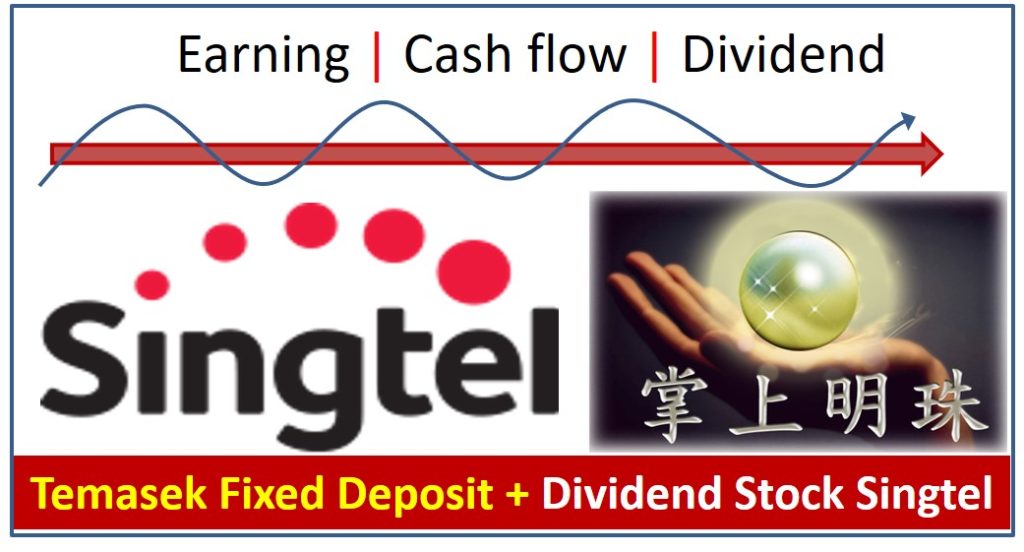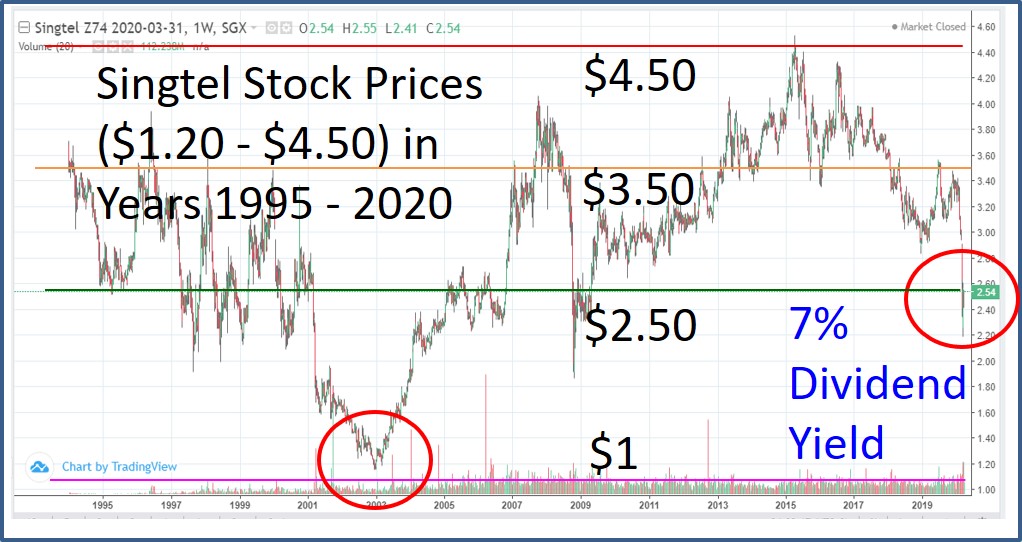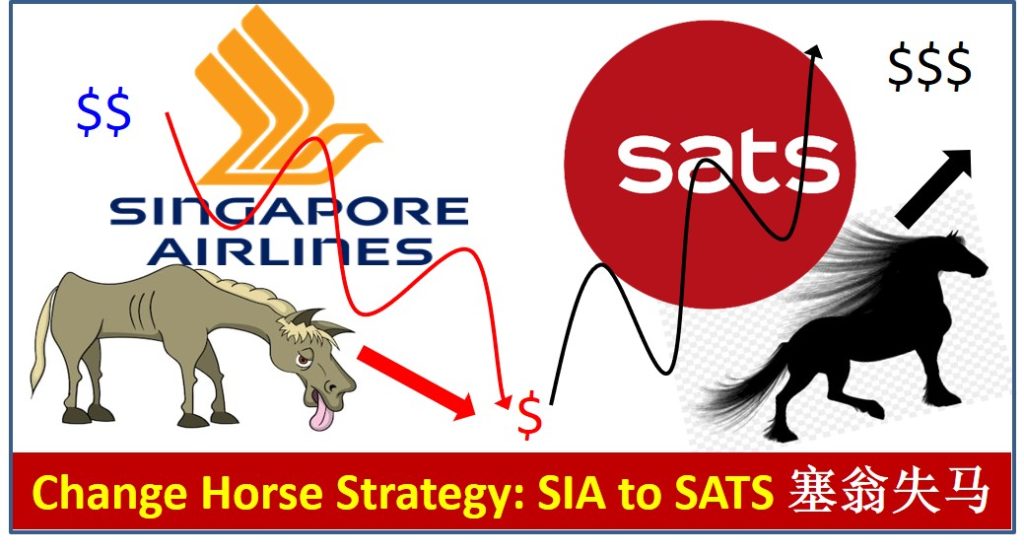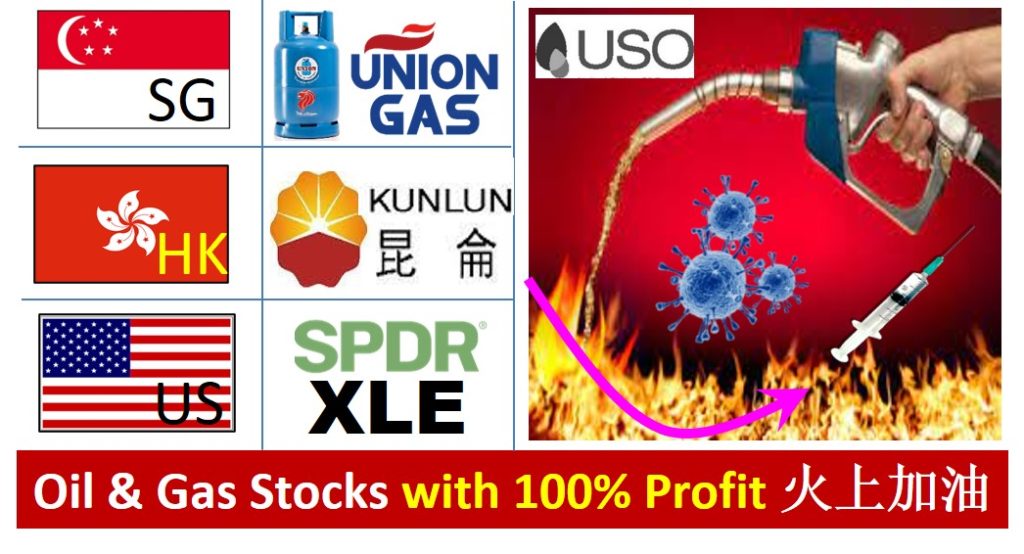
Crude oil crashed to negative price 1 year ago, how many of you dare to buy oil or related stocks when others were fearful? Everyone knows “Buy Low Sell High” is the secret to make money in investment but in practice, not many people able to pluck the low-hanging fruits.
In this article, you will learn from Dr Tee on Giant Oil & Stocks of 3 Countries (over 100% profits in the past 1 year) for longer term investing and / or short term trading with COVID-19 recovery stock rally. Bonus for readers who could read every word of the entire article, learning unique strategy to position in each giant stocks, including Ein55 Optimism level and Ein55 Intrinsic Value.
1) US Giant Oil & Gas Funds
Energy Sector SPDR Fund (NYSE ARCA: XLE) / US Oil Fund (NYSE ARCA: USO)
– 100% capital gains after oil price surged over 3 times in last 1 year
2) Singapore Giant Oil & Gas Stock: Union Gas Holdings (SGX: 1F2)
– over 100% profit since sharing in 5 months after sharing with Ein55 graduates & public webinars
3) Hong Kong / China Giant Oil & Gas Stock: Kunlun Energy Company (HKEX: 135)
– over 30% special dividend yield and over 20% capital gains since Ex-Dividend on 31 May 2021
Crude oil is a major commodity, therefore a giant by default (similar to property market which is also a form of commodity) as it is not possible for the world to live without energy supply. Crude oil experienced bearish market due to natural market cycle since Year 2014 when WTI crude oil prices fell from high optimism of over US$100/barrel to low optimism of US$20/barrel, even crashed to negative price (only for 1 day due to abnormal oil futures contract, mostly from USO oil fund) during pandemic in Apr 2020.
For cyclic giant such as crude oil and related Oil & Gas stocks, the entire market was reborn after the worst time of negative oil price. OPEC and non-OPEC oil producer countries learn to collaborate to stabilize the oil price during this crisis of century. Since then, oil price and related stocks start to rebound from low Ein55 Optimism but mainly limited to long term value investors. During recovery of pandemic over the past 1 year with more energy consumption (industries, transportation, household, etc), oil price and related stocks have gone up steadily, even approaching fair prices with mid Ein55 Optimism. With support of more short term traders who join the game recently (火上加油), oil and gas stocks are enjoying strong uptrend momentum in prices.
A giant stock may not need to be big in size, even a small company could be a giant stock. There are hundreds of Oil & Gas stocks globally but some could be junk stocks, Buy Low may become lower in share prices with declining businesses. Let’s study Global Giant Oil & Gas Stocks (following Dr Tee criteria), some are recovering from lower optimism in 3 global stock exchanges interested by readers:
1) US Giant Oil & Gas Funds
Energy Sector SPDR Fund (NYSE ARCA: XLE) / US Oil Fund (NYSE ARCA: USO)
There is no direct way of investing in crude oil market, some investors may consider either investing through oil futures fund, eg. United States Oil ETF (NYSE ACRA: USO) or Energy Sector SPDR Fund (NYSE ARCA: XLE).
USO oil fund applies rollover of WTI oil futures contracts to invest in oil indirectly. Due to Contango in most of the time over the past few years, USO has underperformed actual oil price due to the additional loss (reducing overall capital gains) when rollover to future contracts with higher prices. However, current oil futures is under Backwardation, rollover of monthly futures contracts with lower prices would give extra capital gains, therefore higher probability of winning for trading crude oil with USO.
During pandemic in Q2 2020, WTI fell to $20/barrel, an investor may apply average down strategy (see earlier educational article by Dr Tee during the worst time of pandemic: https://www.ein55.com/2020/03/10-bullets-of-crude-oil-uso-etf-investing/), even if following oil prices to $0 (excluding negative price), average entry price is only $10/barrel (average of $20 + $15 + $10 + $5 + $0), now is already over $70/barrel, over 7 times.
Even if an investor invested in WTI oil price at the highest price of low optimism level, $20/barrel, the corresponding USO fund price was about $33/unit (after 8 to 1 stock consolidation), current price is about $48/unit (with WTI price of about $70/barrel), nearly 50% capital gains (not comparable with actual 3X oil price gains from $20/barrel to $70/barrel, mainly due to USO huge loss during negative oil price and Contango period).
If reading most blogs or analysts reports during pandemic in Q2/2020 after negative oil price, most would write with hindsight that USO was in trouble, may even go bankrupt. Interest in Oil & Gas stocks was very low as well with so many bad news on crude oil market in the past. In fact, this was a perfect time for oil & gas giant stock investing, especially for a few with strong business, supported by dividend yield over 10% (only known to Ein55 graduates), possible for contrarian investing with average down strategy to Buy Low, collecting quarterly dividend while waiting for the light at the end of tunnel for stock recovery to Sell High one day (currently is only a fair price for crude oil and related giant stocks).
After 1 year later, for investors who could take action with calculated risk on USO (despite this is not perfect for oil investing) or Oil & Gas giant stocks, they are rewarded now. For those who are still thinking or analyzing today (when others are not fearful anymore on oil market), the upside is limited, unless following short term momentum trading.
An alternative to oil futures fund or giant stock investing is to invest in a portfolio of large cap stocks (may not be giant stocks), diversifying the unsystematic business risks. SPDR fund for Energy Sector Index (XLE) consists of big oil & gas companies such as Exxon Mobil (NYSE: XOM), Chevron (NYSE: CVX), Phillips 66 (NYSE: PSX), etc. These oil & gas stocks are too big to fail (although may not be true all the time but unlikely for all to go bankrupt together), having more reserves to last through the winter time with low Ein55 Optimism oil prices. XLE fund portfolio is supported by integrated oil businesses (upstream oil exploration, midstream oil delivery and storage, downstream oil refinery and processing).
When WTI oil price was $20/barrel, assuming an investor invested in XLE (was about $28/unit), potential capital gains so far is 100%, 2X with XLE at about $55/unit. XLE could be a better option than USO for longer term investing as it is supported indirectly by big Oil & Gas companies (may not be giant stocks, following Dr Tee criteria) with interests affected by oil prices. USO is fine for shorter term trading unless during Backwardation period with additional capital gains.
Current Brent or WTI crude oil price of $70+/barrel is still below the Ein55 Intrinsic Value of about $80+/barrel. When there is market greed (common for cyclic commodity market), there is further potential to go beyond $100+/barrel, especially with weaker US Dollar and strong global economy during pandemic recovery after global vaccination. If so, a smart investor would know when to exit, taking profits at high Ein55 Optimism, waiting for the next market cycle to profit from crude oil and related stocks again.
For conservative investors, it is fine to exit earlier with fair price (after Buy Low last time), converting Oil & Gas stocks to cash (as future investment opportunity fund) or Change Horse to other more defensive dividend giant stocks in the phase 2 (greedy market cycle) of stock market. Cash is King when used at the right time (usually during bearish market with low Ein55 Optimism such as Year 2020 pandemic), an investor has to know when to convert between stocks and cash.
2) Singapore Giant Oil & Gas Stock: Union Gas Holdings (SGX: 1F2)
There are only about 40 Oil & Gas giant stocks globally, excluding marginal giant stocks with familiar names such as Exxon Mobil (NYSE: XOM) and Keppel Corp (SGX: BN4). In fact, many Oil & Gas giant stocks are small and medium cap stocks, businesses have been growing steadily even with bearish WTI crude oil prices over the past 6 years, falling from $100/barrel to $20/barrel to negative prices. Value is what you get (barrel of crude oil) and price is what you pay, therefore abnormal negative price (seller has to pay to buyer) could not last over 1 day. It can be risky to invest in non-giant oil & gas stocks, especially in Singapore, Buy Low may get lower or even potentially going bankrupt in business, losing everything.
Union Gas is a young Oil & Gas Giant stock in Singapore (4 years after IPO) but having over 40 years of business in LPG (Liquefied Petroleum Gas), business performance has been excellent before and after IPO till now, potential to expand from Singapore to other Southeast Asian countries. Major shareholder (Teo family) has over 70% ownership, paying steady dividend to themselves and also to other shareholders. However, Union Gas share price was stagnant since IPO until last 1 year of pandemic (crisis as opportunity due to higher demand for LPG when people staying longer at home), starting to break above low optimism level of $0.30/share, going up steadily.
When Dr Tee assigned this homework to Ein55 Graduates in Jan 2021, main strategy was positioning for trading with entry share price at $0.53/share or above after each intermediate price breakout. The stock has gone up a few rounds over the past 5 months, trend-following trading may be applied, especially for giant stock at higher optimism with support by growing business in a promising sector with strong global economy. Based on current price of $1.10 on 14 June 2021 (another 10% rally today), it has doubled its share price with 100% profits.
Union Gas is both a growth stock for long term investing and momentum stock for short term trading. Dr Tee has used the same stock as case study in free 4hr monthly webinars (www.ein55.com) over the past few months, even a trader may enter halfway at $0.80+, potential gains so far is already over 30%. For shorter term trading of giant stocks, it is crucial to include S.E.T. (Stop Loss / Entry / Target Prices) in trading plan.
Union Gas is one of over 200 stocks in Singapore Catalist Market, mostly are penny stocks (many have weak business fundamentals), only 5 stocks have over $1/share price. However, some strong price penny stocks in the past may not be sustainable in future. For example, both UG Healthcare Corporation (SGX: 8K7) and Medtecs International Corporation (SGX: 546) from Catalist market were over $1/share, now back to penny stock (below $1/share) after the market greed has subsided for pandemic beneficiary stocks. Those speculators who chase after the high prices would suffer huge loss when the momentum is stopped one day.
In the last rally of global stock market, usually penny stocks including many junk stocks would go to higher optimism level, speculators may buy up (especially when stock prices rising over 2-10 times) without consideration of businesses, ignorant of price vs value. Sadly to say, this group of speculators (mainly applying tips strategy in action taking) may make some pocket money with over small gains of 10-20% but eventually may need to pay back over big losses of 50-90% to Mr Market when show hands at wrong time with more capitals in future trades of junk stocks with consideration of prices alone (happened several times before, including penny stock crisis many years ago with Blumont (SGX: A33), LionGold (SGX: A78), etc.
3) Hong Kong / China Giant Oil & Gas Stock: Kunlun Energy Company (HKEX: 135)
Kunlun Energy was a Temasek stock who was lucky to sell the stocks many years ago while the stock prices falling from peak of over $16/share in Year 2013 to $4/share during pandemic 2020. In fact, Kunlun Energy has been a little giant stock under giant parent company, PetroChina (HKEX: 857), No 2 largest Oil & Gas stock in the world. Kunlun is a small cap company with integrated LNG (Liquefied Natural Gas) businesses.
Kunlun Energy has strong business fundamental but share prices have been affected by bearish crude oil and natural gas prices. Natural gas usually is a byproduct of crude oil drilling, therefore both Oil & Gas stocks are strongly correlated in both businesses and share prices within similar sector, despite the applications are different. Even the future world may not need crude oil one day, becoming 100% green energy, still needs natural gas to produce electricity.
So, popularity of electric vehicles would not eliminate traditional energy sources of crude oil and natural gas. Buying technology giant stocks such as Tesla (NASDAQ: TSLA) is mainly investing in future (pretty picture with higher uncertainty), while buying Oil & Gas giant stocks, are based on proven current business (low-hanging fruits). An investor may make decision with known facts (which sometimes may last for decades, no need to predict into future which may not come within one’s lifetime.
Over the last 1 year of pandemic, Kunlun Energy recovers in share prices from $4/share to over $9/share with over 100% capital gains. Over the past few months, Dr Tee has shared Kunlun Energy with both Ein55 Graduates and monthly free 4hr public webinars (www.ein55.com), those who take actions recently could profit in both one-time special dividend yield of 32% (mainly due to disposal of an asset) and over 20% capital gains since Ex-Dividend on 31 May 2021 till now.
Kunlun Energy is still a momentum stock for trading, certain trading platform may not adjust for 32% dividend yield on 31 May 2021, then investor has to take note of the 30% price ($9 to $6) differences. It may also be considered for longer term investing (current price is still near to low Ein55 optimism level) with Ein55 Intrinsic Value nearly $18. However, this stock is highly cyclical, may not be suitable for low risk tolerance investor (even Temasek sold it in the last bearish cycle), despite business fundamental is excellent with strong sponsor (PetroChina), share price could fluctuate more than indices.
Volatility could be friend for traders while low optimism (price lower than value) could be friend for investors. So, an investor has to confirm PA (Personal Analysis), aligning the investing strategies with own unique personality (eg. short term trading or long term investing). PA is an anchor point to avoid drifting of position due to emotional stock market. “Copy and Paste” of other people’s best stocks or successes may not work without internalization.
===================================
Due to sector rotation with weakening of USD, commodity market is recovering steadily from low optimism in last few years, now approaching mid optimism of fair value, attracting potential short term traders to follow the uptrend prices of commodity stocks (oil & gas, agricultural, precious metals, etc).
Value investor has option to enter these lower Ein55 Optimism stocks at much lower prices (Buy Low Sell High) with contrarian investing (supporting by high dividend yield). Short term traders would enter at much higher prices (Buy high sell higher), following trends.
Either long term investing or short term trading could make money in stocks. A common way could not make money is simply do nothing, waiting for inflation to depreciate the cash by -2% yearly which is sure loss over long term. Cash is King only when used at the right time, not keeping forever.
===================================
There are over 2000 giant stocks in the world based on Dr Tee criteria, choice of 10 Dream Team giant stocks have to align with one’s unique personality, eg. for shorter term trading (eg. momentum or swing trading) or longer term investing (cyclic investing, undervalue investing or growth investing). Readers should not just “copy and paste” any stock (What to Buy, When to Buy/Sell) as successful action taking requires deeper consideration (LOFTP strategies – Level / Optimism / Fundamental / Technical / Personal Analysis) which you could learn further from Dr Tee Free 4-hr Webinar.
Drop by Dr Tee free 4hr webinar (learning at comfort of home with Zoom) to learn how to position in global giant stocks during COVID-19 stock crisis with 10 unique stock investing strategies, knowing What to Buy, When to Buy/Sell.
Zoom will be started 30 min before event, bonus talk (Q&A on any investment topics from readers) for early birds. There are many topics we will cover in this 4hr webinar, Dr Tee can have more time for Q&A if you could stay later after the webinar, you could ask on any global and local stocks including but not limited to 30 STI component stocks:
Ascendas Reit (SGX: A17U), CapitaLand (SGX: C31), CapitaLand Integrated Commercial Trust (SGX: C38U), City Development (SGX: C09), ComfortDelGro (SGX: C52), Dairy Farm International (SGX: D01), DBS Bank (SGX: D05), Frasers Logistics & Commercial Trust (SGX: BUOU), Genting Singapore (SGX: G13), Hongkong Land (SGX: H78), Jardine Cycle & Carriage (SGX: C07), Jardine Matheson Holdings JMH (SGX: J36), Keppel Corp (SGX: BN4), Keppel DC Reit (SGX: AJBU), Mapletree Commercial Trust (SGX: N2IU), Mapletree Industrial Trust (SGX: ME8U), Mapletree Logistics Trust (SGX: M44U), OCBC Bank (SGX: O39), SATS (SGX: S58), Sembcorp Industries (SGX: U96), Singapore Airlines (SGX: C6L), Singapore Exchange (SGX: S68), Singtel (SGX: Z74), ST Engineering (SGX: S63), Thai Beverage (SGX: Y92), UOB Bank (SGX: U11), UOL (SGX: U14), Venture Corporation (SGX: V03), Wilmar International (SGX: F34), YZJ Shipbldg SGD (SGX: BS6).
Dr Tee will cover over 20 case studies, Singapore giant stocks, eg. CapitaLand Integrated Commercial Trust (SGX: C38U), Singapore Exchange (SGX: S68), Keppel Corp (SGX: BN4), Top Glove (SGX: BVA), Jardine Matheson Holdings JMH (SGX: J36), Vicom (SGX: WJP) and many others, Malaysia giant stocks, Hong Kong giant stocks and US giant stocks, both long term investing and short term trading.
There are limited tickets left for this 4hr free webinar, please ensure 100% you could join when register: www.ein55.com
View quick preview video below, Dr Tee will introduce 10 key stock investment strategies (股票投资十招) to be learned in 4hr free stock webinar:
Register Here (Dr Tee Free 4hr Stock Webinar): www.ein55.com
